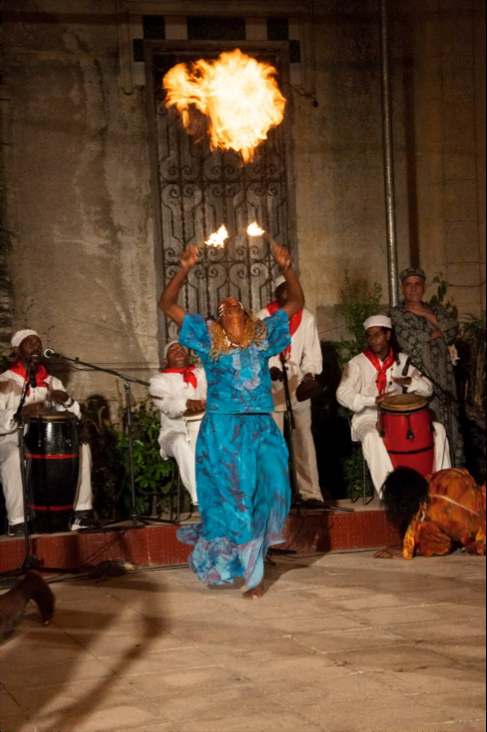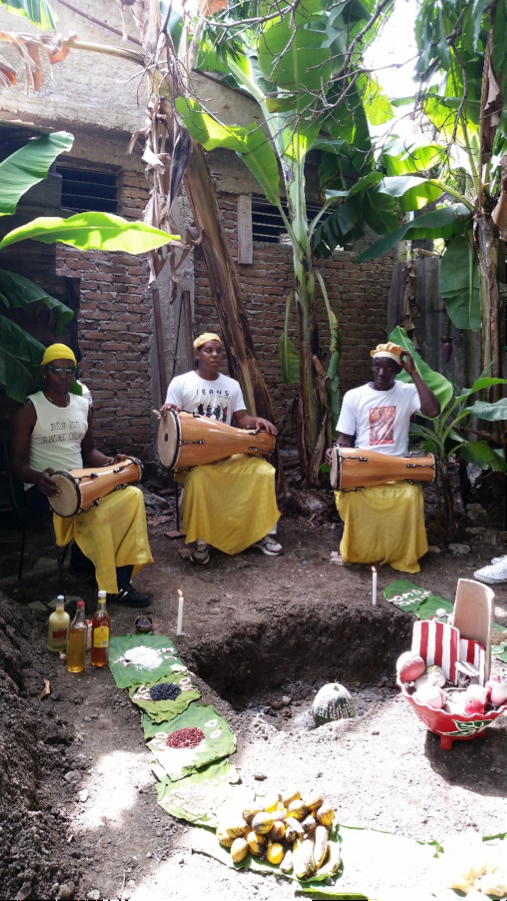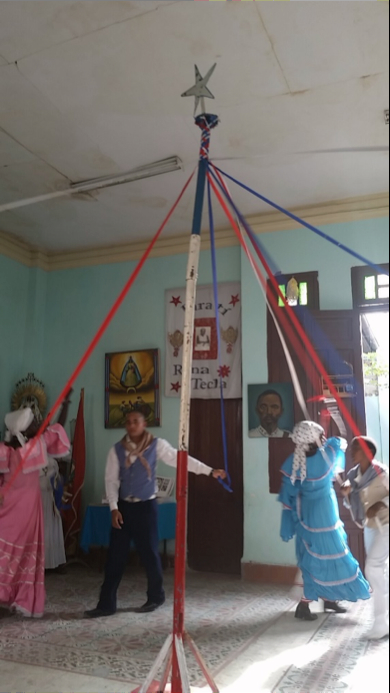Carvahlo studies in Cuba share stories of student success and adventure around the globe
The Department of Classical and Modern Languages, Literatures and Cultures are proud to share stories of student success and adventure around the globe. Clarissa Carvahlo discusses her recent trip to Cuba and the research she worked on while there. Carvalho is starting her fourth year at Wayne State University, pursuing a B.A. in Spanish and a minor in nutrition. All pictures provided were taken by herself or a classmate, Hatim Shafiq, between June 19 through July 11, 2015.
Cultural anthropology in Cuba
It was the most interesting time to go to Cuba. It had recently been removed from the State Sponsors of Terrorism list of the U.S., and embassies were about to be re-opened, so the fifteen people from Wayne State University were ready for the adventure of a lifetime. We did not know how the Cubans would react to a bunch of American college students roaming around the country, but we were prepared for the worst. To our great surprise, Cubans were so friendly and welcoming. Everyone we met was excited to share their country with us.
U.S., and embassies were about to be re-opened, so the fifteen people from Wayne State University were ready for the adventure of a lifetime. We did not know how the Cubans would react to a bunch of American college students roaming around the country, but we were prepared for the worst. To our great surprise, Cubans were so friendly and welcoming. Everyone we met was excited to share their country with us.
I traveled to Cuba with the WSU anthropology department to study cultural anthropology and collect research to learn about cultural preservation in Cuba. I was there for two weeks, two weeks in Santiago de Cuba, and one week in Havana.
The two cities were quite different from each other. Santiago de Cuba is on the east, surrounded by the Sierra Maestra mountain range.
It wasn't much of a tourist destination, which made our experience even better - we got to absorb the real Cuban lifestyle. Havana is in the west of Cuba, the capital of the country. The city catered to tourists, bustling streets and vendors on every corner. Cuba is a different world. It felt like a step back in time. With the classic cars and vintage buildings, I felt like I was in the 1950s. The people there are so self-sufficient, and we could tell that they had truly been through so much during their lives yet, they are so happy and full of life.
I conducted research on cultural preservation in Cuba. I was curious to see what Cuban culture was like - since Cuba had had an influx of people, slaves or conquerors, from all around the globe, from Haiti, Spain, China, and Africa to name a few. We saw many methods of cultural preservation during our stay, including Carnaval del Caribe, an annual festival in Santiago de Cuba celebrating Caribbean countries, a Santeria ceremony, which involved the sacrifice of a live animal, and Tumba Francesa, a dance genre brought to Cuba by the Haitians.
Carnaval del Caribe started about 35 years ago, by the Casa del Caribe, who coordinates celebrations and acknowledgments of the Caribbean. This year, the Carnaval celebrated the Bahamas. We got to attend the first night of the festival. There was dancing, music, singing, and performances by the Cubans involving fire-breathing. This carnival, when it first began, lasted about a month, then it shortened to 10 days, and today the festival lasts only a week. Still, it is a week full of joyous celebrations of unity and culture within the Caribbean countries.
days, and today the festival lasts only a week. Still, it is a week full of joyous celebrations of unity and culture within the Caribbean countries.
Santeria is a Cuban religion that combines the African voodoo religion of Yoruba and Roman Catholicism. Santaria was brought to Cuba by the African slaves. The Spanish conquerors wanted the slaves to convert to Catholicism. Instead, the Africans synchronized their voodoo gods with the Catholic saints, and they attended Mass in church every Sunday, just like the Spaniards wanted them to, except the Africans prayed to their gods and not the Catholic God.
One of the most important rituals in the Afro-Caribbean religion of Santeria is Ebó. Ebó is a ritual sacrifice of food and sometimes even an animal sacrifice. We got to witness Ebó with a chicken sacrifice. This ritual is to restore balance to a person's life and rid them of their sins. It could somewhat be compared to the Catholic sacrament of Reconciliation, which purifies a Catholic of his or her sins.
Tumba Francesa translates to "French Drums". During the Spanish rule, Spain imported slaves from Haiti, who had much of their cultural influence from France, including their dance practices. In order to be more like their owners, the Haitian slaves would mimic the French dancing. When the Haitian slaves came to Cuba, they also brought these French dances with them.
The performance that we got to witness involved four women and four men dressed in traditional French clothing. There was a band that involved three drummers, and a few singers, and a lady with a whistle. The whistle was blown rhythmically to signal a new step in t he dance. First dancing in pairs, the couples greeted one another as well as the audience. As the dance went on, a Maypole was carried onto the performance stage. The Maypole was an important object in Pagan times for their fertility rituals. It was practiced all over Western Europe. Multicolored ribbons are held by each dancer and are intertwined gracefully by dancing.
he dance. First dancing in pairs, the couples greeted one another as well as the audience. As the dance went on, a Maypole was carried onto the performance stage. The Maypole was an important object in Pagan times for their fertility rituals. It was practiced all over Western Europe. Multicolored ribbons are held by each dancer and are intertwined gracefully by dancing.
Before I left to come back to Michigan, I was sitting by the ocean, soaking in all the adventures and culture of Cuba. I knew I would be asked "So how was Cuba?" and I knew I would not be able to do it justice. The powerful feelings I felt, the emotional stories I heard, the historic places I saw, the passionate people I talked to, the strong smells of diesel in the city, nothing I could say would be even close to actually being there.
I just answer with, "It was humbling, amazing and life-changing." Humbling because Cuba made me realize how many opportunities have been given to me. Amazing because we climbed many mountains, trekked through coffee plantations, walked around entire cities, and not a day went by that I wasn't in love with another aspect of Cuba.
Lastly, Cuba was life-changing because of the people I went with, the people I met, the intensity of the conversations I had, and the list goes on. My favorite lesson that I learned from Cuba though, was unity.
Unity in myself, unity with one another, and unity with the past. It is important to recall history and learn from its lessons, and never forget how we got to be the people that we are today.
Clarissa Carvahlo